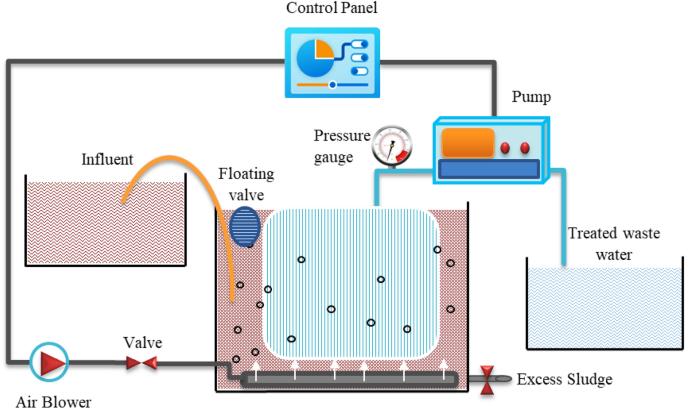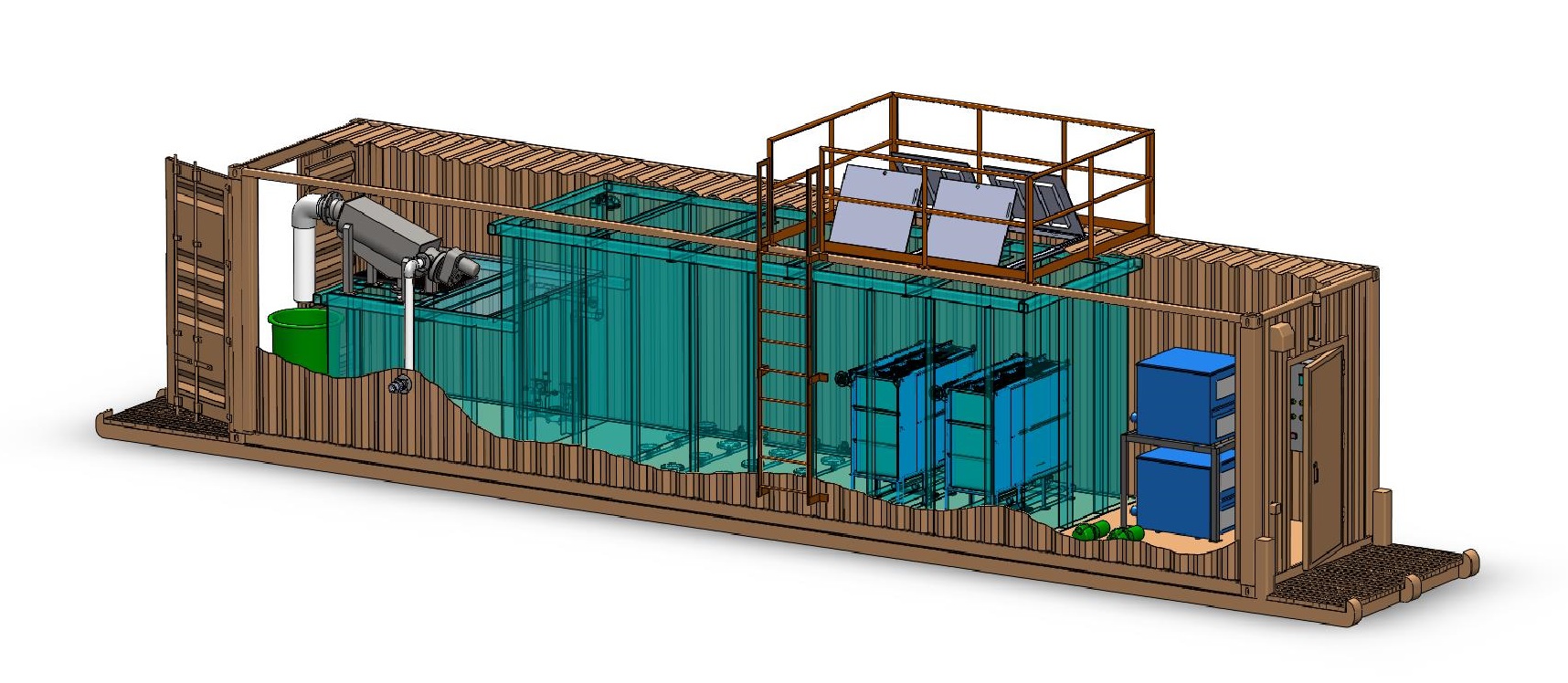How to Optimize Membrane Bioreactor Performance for Maximum Efficiency
How to Optimize Membrane Bioreactor Performance for Maximum Efficiency
Blog Article
How Membrane Layer Bioreactors Are Reinventing Water Purification Solutions
The appearance of membrane bioreactors (MBRs) stands for a substantial advancement in the field of water purification, combining biological therapy processes with innovative membrane filtering innovations. As global water shortage intensifies, the role of MBRs in facilitating safe and clean water reuse and lasting water management becomes increasingly critical.
Summary of Membrane Layer Bioreactors
Membrane layer bioreactors (MBRs) represent a significant innovation in water purification technology, as they integrate organic treatment processes with membrane layer filtering. This assimilation boosts the performance of wastewater therapy by making use of microbes to weaken organic contaminants while simultaneously utilizing semi-permeable membranes to separate treated water from suspended solids and pathogens.
The MBR system normally contains an organic activator where the microbial populace metabolizes pollutants, complied with by a membrane layer purification device that preserves biomass and enables only tidy water to pass through. This twin functionality results in higher effluent top quality compared to standard treatment approaches. MBRs can be operated in both batch and continuous circulation settings, offering adaptability in style and application.
Furthermore, MBRs are identified by their portable footprint, making them ideal for metropolitan setups with room restrictions. Membrane Bioreactor. They also enable the healing of water for reuse, therefore adding to water sustainability campaigns. While MBR modern technology has actually gained popularity in industrial and metropolitan applications, its functional intricacies and power needs necessitate careful factor to consider throughout implementation. Generally, MBRs go to the forefront of boosting water treatment effectiveness and top quality, showcasing the capacity for ingenious options in ecological monitoring.
Advantages of MBR Technology
The assimilation of organic therapy with membrane layer filtration offers various advantages for water filtration procedures. Among the key advantages of Membrane layer Bioreactor (MBR) modern technology is its capacity to successfully eliminate both natural and not natural pollutants, causing top quality effluent. The membranes serve as a physical barrier, avoiding suspended solids and pathogens from going through, which improves the overall safety and reliability of cured water.
In addition, MBR systems require a smaller footprint compared to traditional treatment methods, permitting much more effective space utilization. This compact layout is specifically helpful in metropolitan settings where land is limited. MBRs additionally show operational flexibility, suiting varying influent qualities and circulation prices without considerable performance destruction.
Furthermore, the procedure uses improved nutrient removal capacities, especially for nitrogen and phosphorus, which are crucial for protecting against eutrophication in obtaining waters. The minimized sludge production connected with MBR innovation additionally equates to reduce disposal costs, making it a cost-effective remedy in the future - Membrane Bioreactor. Overall, the benefits of MBR technology position it as a leading selection for ingenious and lasting water purification systems, attending to both ecological and economic worries
Applications in Water Filtration
Applications of Membrane Bioreactor (MBR) modern technology in water purification are varied and impactful, resolving various therapy requires across several sectors. MBRs properly integrate organic therapy processes with membrane layer purification, making them perfect for community wastewater therapy, commercial effluent management, and even safe and clean water reuse initiatives.
In metropolitan settings, MBRs are progressively employed to enhance the top quality of treated wastewater, permitting compliance with rigid discharge laws and facilitating the recycling of water for irrigation and non-potable uses. Their small layout additionally makes them ideal for city settings where room is restricted.
Industrially, MBR modern technology is made use of to deal with procedure water and wastewater, specifically in fields such as food and drink, drugs, and textiles. By properly getting rid of impurities and put on hold solids, MBRs aid sectors reduce environmental impacts while recouping beneficial sources from wastewater streams.
In Addition, MBRs are obtaining grip in decentralized water treatment applications, where small-scale systems can be released in remote locations or establishing regions. This versatility enables communities to attain lasting water administration solutions, enhancing accessibility to tidy water while minimizing reliance on traditional therapy techniques.
Case Studies and Success Stories

In an additional example, a textile production facility in Bangladesh took on MBR technology to resolve its wastewater difficulties. The system reduced chemical oxygen need (COD) levels from 1,200 mg/L to much less than 100 mg/L, therefore fulfilling regulatory criteria and substantially minimizing ecological impact.
The College of Cape Town's MBR installment has actually shown reliable in treating greywater for non-potable reuse on university. This project not just conserves drinkable water however also functions as an educational design for sustainable methods.
In addition, a seafood processing plant in Norway made use of MBR technology to treat effluents having high levels of natural issue, accomplishing over 90% contaminant elimination. These case researches underscore MBR innovation's versatility and its crucial duty in boosting water quality throughout varied applications.
Future of Water Therapy Solutions
As international water scarcity and contamination difficulties magnify, ingenious water therapy solutions are becoming progressively important site important to ensure sustainable access to clean water. The future of water therapy hinges on the combination of advanced innovations that boost the effectiveness and performance of purification procedures. Membrane layer bioreactors (MBRs) are at the forefront of this development, integrating organic therapy with membrane layer filtering to create premium effluent suitable for various applications.

Arising patterns such as source recovery from wastewater, consisting of nutrients and power, will certainly additionally transform treatment facilities right into eco-friendly hubs. Advancements in Click This Link nanotechnology and membrane products guarantee boosted efficiency and durability of filtering systems.

Conclusion
Their role in drinkable water reuse and sustainable water monitoring highlights their significance in resolving global water shortage obstacles. Continued research study and growth will certainly further improve the efficiency and adoption of MBR innovation, making certain a resilient future for water treatment services.
The appearance of membrane bioreactors (MBRs) represents a considerable innovation in the area of water purification, merging biological treatment procedures with innovative membrane layer purification technologies. As global water shortage escalates, the duty of MBRs in facilitating potable water reuse and sustainable water administration ends up being progressively important. They additionally make it possible for the recuperation of water for reuse, thus adding to water sustainability campaigns.As international water deficiency and air pollution obstacles intensify, innovative water therapy solutions are coming to be significantly crucial to make certain lasting accessibility to tidy water. Their function in potable water reuse and sustainable water management highlights their importance in browse this site addressing international water deficiency difficulties.
Report this page